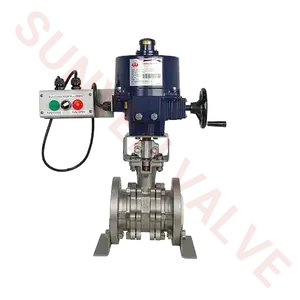A valve actuator is a mechanical device that provides the force and motion to operate a valve remotely or automatically, eliminating the need for manual intervention. The primary function of a valve actuator is to open, close, or modulate the valve based on the requirements of the system it serves. This operation is crucial in controlling the flow of fluids such as gases, liquids, or slurries through industrial systems and pipelines.
Actuators come in various types, each suited to specific applications and operational requirements. The most common types include electric, pneumatic, and hydraulic actuators:
Electric Actuators: These use electric motors to move the valve stem. They are preferred in environments where precise control is needed and where air supply (for pneumatic actuators) is not readily available. They can be used for both on/off and modulating services.
Pneumatic Actuators: These use compressed air to operate the valve, making them highly efficient and suitable for explosive or hazardous environments due to their inherent lack of spark risk.
Hydraulic Actuators: Powered by pressurized fluid, they offer extremely high force output for large valve or high-pressure applications.
Each actuator type can be equipped with sensors and controllers that allow for feedback and integration into automated process control systems, enhancing operational efficiency and safety. Valve actuators thus play a vital role in automation, enhancing system responsiveness, and reliability in various industrial applications.
 en
en  es
es  ru
ru  ar
ar  tr
tr  id
id 






